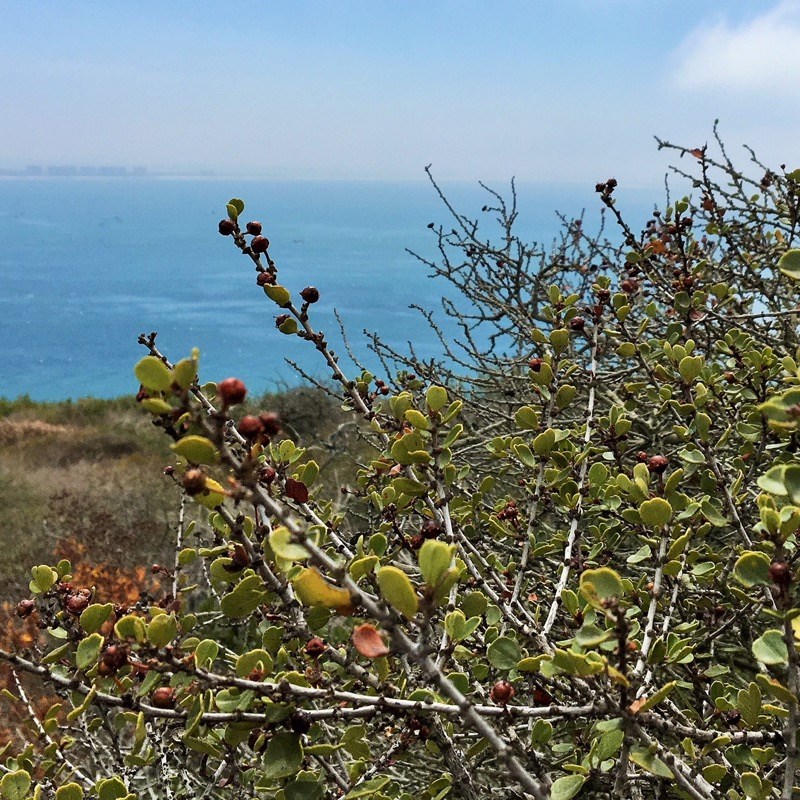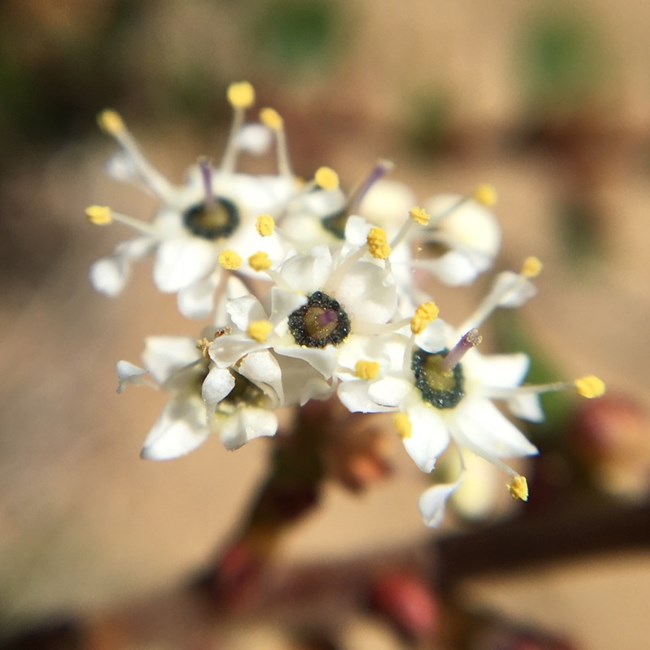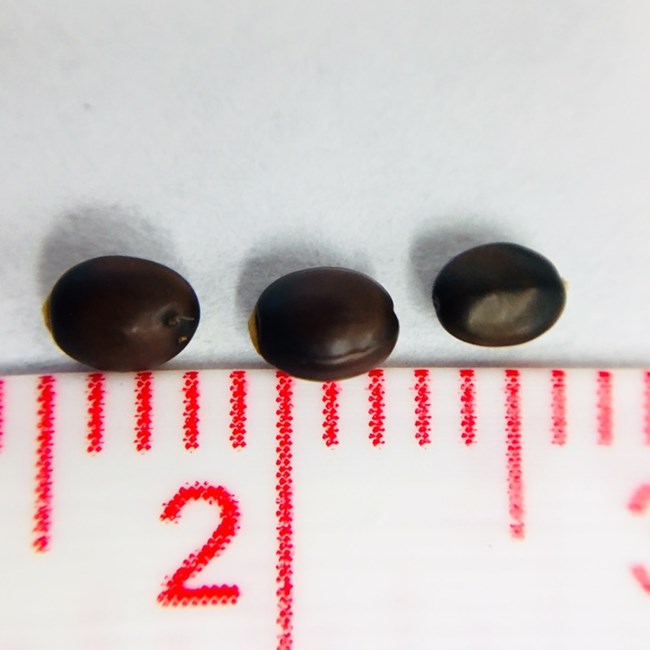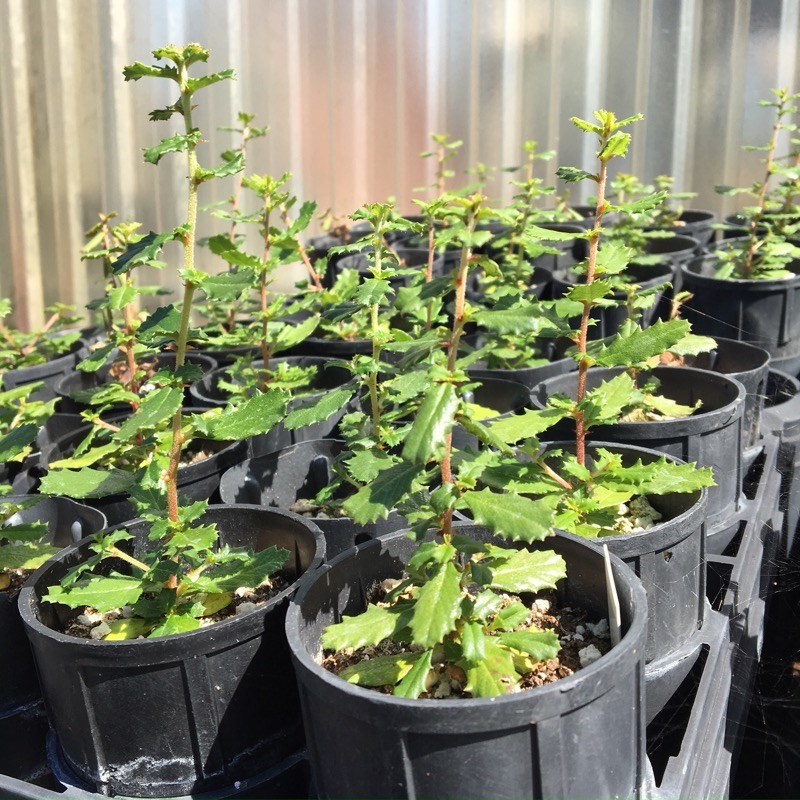Last updated: August 15, 2018
Article
This Shrub is Not Getting Enough Fire. Humans and Hot Water are Helping.
By Andrew Rosales, June 2018
As the heat of the early summer sun bears down on Ranger Adam Taylor, he makes his way down the hillside within Cabrillo National Monument in search of his quarry—the wart-stemmed ceanothus (Ceanothus verrucosus). This plant is endemic to San Diego County and Northern Baja California. It is an evergreen shrub reaching up to 3m in height and found in the coastal chaparral and coastal sage scrub. The leaves are alternately placed along a bumpy stem and are about 1.5cm in length.

NPS / Andrew Rosales
This plant is one of many species Ranger Taylor and his volunteers seek out to collect seed from in the park. Wart-stem ceanothus is important for propagation and restoration work because it is fire dependent, germination occurs with intense heat, and with fire suppression and urbanization, this species is noted as threatened here in San Diego County.

NPS / Andrew Rosales
The small white flowers are about 0.6cm in diameter. They have five sepals and five petals that form the base of the flower. At the center is a purple nectariferous disc that surrounds one pistil. The disc glistens with nectar and helps the flower’s center appear purple.
The flowers cluster at the ends of the branches and attract many pollinators in search of the nectar. At the height of their bloom, the plant is covered with pollinators and has a slight vanilla scent. Blooming months are from January to April and the white clusters can been seen on our local hills and canyons in San Diego and within Cabrillo National Monument.
After pollination has occurred, the fruit is a capsule with three chambers about 0.5cm long. When the fruit is ripe, these capsules explode, spreading the tiny seeds away from the plant. For this reason, timing is crucial when collecting this seed. If you wait to long, the plants have ejected all the seeds, and none can be collected for that growing season.

NPS / Andrew Rosales

NPS / Andrew Rosales
The current seed has been collected to continue the propagation of this plant in Cabrillo’s greenhouse. Ranger Taylor and his staff have setup protocols that have been successful for the germination of this species. The process includes placing the seed directly into boiled water. This intense heat simulates fire and softens the seed coat enabling it to crack open. The seeds then sit overnight in this water to soften the hard, outer coat and begin to absorb some water. The seeds are then placed into trays and covered with soil. Some of this soil has been gathered from the base of existing Ceanothus populations in the park to help the new sprouts to grow large enough for restoration. The theory behind this is that some of the microbial material found in the soil of successful populations may help to foster healthier young plants to grow stronger to tolerate transplanting. He is continuing to explore new options to increase the success rate of germinated seedlings.

NPS / Andrew Rosales
When you visit the park and see rangers and volunteers in orange vests veering off trail, know that it may be Ranger Taylor or his volunteers out collecting seeds for the greenhouse. This is one of the many ways park staff continue to monitor the natural resources here at Cabrillo National Monument, as well as preserve and protect these amazing native populations.
Originally published on Cabrillo National Monument's Field Notes Blog. Re-distributed by the Mediterranean Coast Inventory and Monitoring Network.
